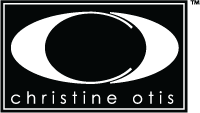Backwards Movement
Moving forward by moving backwards
Think of a movie script. Many movies go back and forth between present and past.
A scene may begin at a present moment, but goes back to the past.
Have you seen the movie, Walk the Line (2005) about Johnny Cash’s life, staring Joaquin Phoenix and Reese Witherspoon?
The opening scene with the saw blade has everything to do with Johnny’s past, but at that moment it’s the present. The audience doesn’t know that the scene has to do with his past, but they find that out as the story unfolds between the parts of past and present, and that’s where the true story lies; between point A and C.
Making that happen and making the story unfold in a cohesive fashion is a true journey for the writer, just as it is for an audience member. It’s where the unknown happens, where life comes together in your — the writer’s — own unique fashion that no one else can duplicate.
It doesn’t matter if you’re telling your story or someone else’s, whether real or fictitious. It’s getting there where the fun begins and ends, lives and breathes.
It’s the push and pull of life, that backwards movement brings forward the past and interlocks it into the present. It makes sense of all that took place in a person’s life.
It’s the basic key holder to the story and plot line.
To get to that end takes understanding of the placement of scenes, both past and present, so they’ll have the greatest impact on the audience. It’s knowing how to make those parts hit the reader, how to make the simple beautifully elegant and how to make the precise cut of a scene into something greater.
Sometimes the simplest of reads packs the greatest punch; and that’s what you want, to hit the reader, to impact the audience, to move them backwards, so they can move forward.
Check out next week’s edition where I get a little more in-depth on backwards movement!
